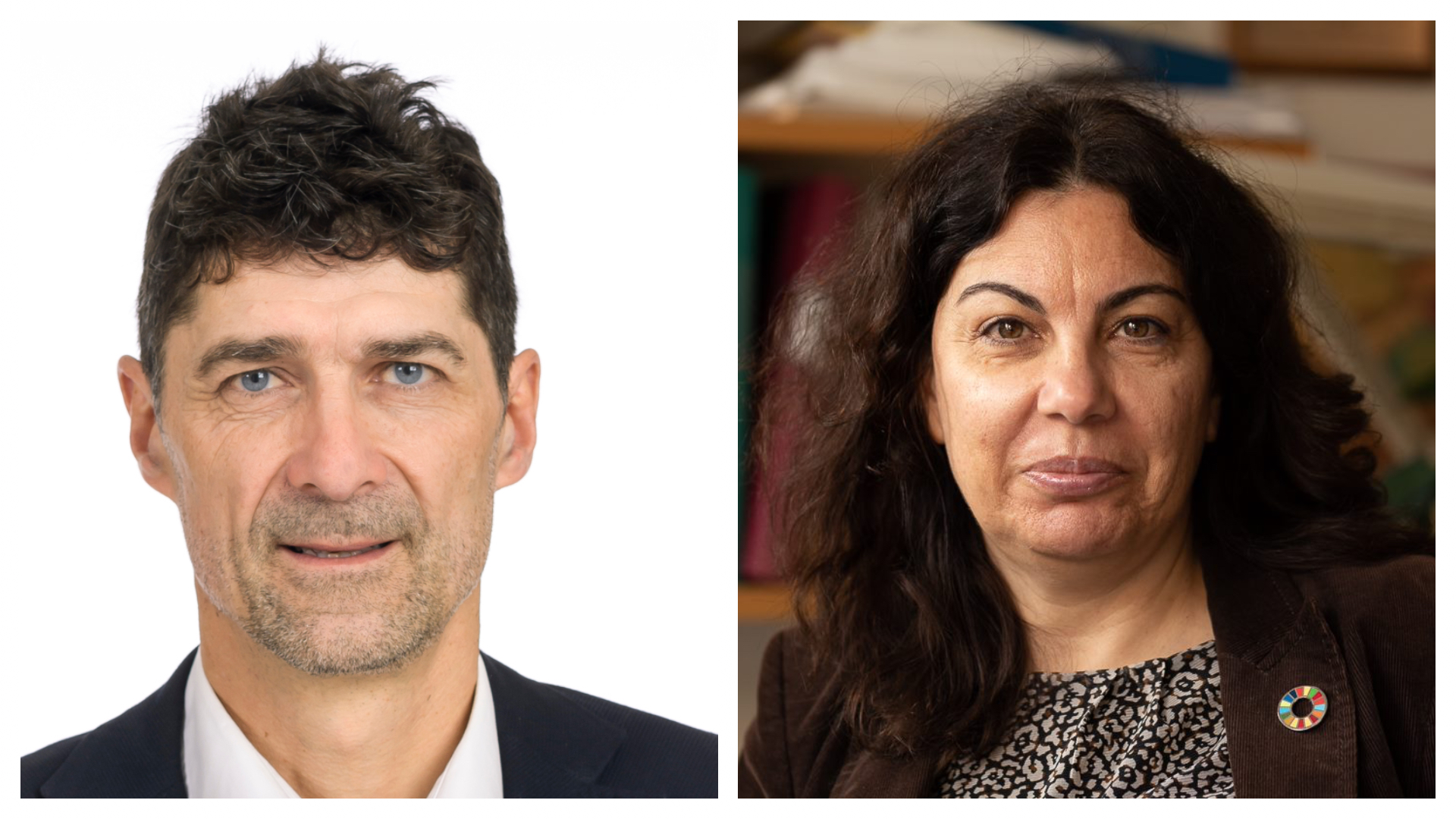LTH’s Wallenberg Scholars are announced
Five researchers at LTH have been appointed Wallenberg Scholars, a programme funded by the Knut and Alice Wallenberg Foundation that supports excellent basic research, primarily in medicine, technology and the natural sciences.
– Published 26 March 2024

Heiner Linke, professor of Nanophysics and Vanya Darakchieva, professor of Semiconductor Physics have been appointed Wallenberg Scholars. In addition, LTH’s three current Wallenberg Scholars – Anne L’Huillier, Kimberly Dick Thelander and Stephanie Reimann – receive grants.
The grants, which are for a five-year period, are worth up to SEK 18 million each for researchers in theoretical subjects and up to SEK 20 million each for researchers in experimental subjects. As the winner of a Nobel Prize, Anne L’Huillier receives a grant of SEK 40 million.
LTH:s new scholars and their projects are as follows:
Building an autonomous protein motor
Proteins are the building blocks of life. Certain proteins play an important role in converting energy into motion – and can therefore also be described as nature's smallest motors. Learning to build using protein molecules has long been a remote prospect for researchers. Physics professor Heiner Linke recently came one step closer to his goal and as a Wallenberg Scholar he wants to go even further.
To begin with, you might wonder why you would even want to try to imitate nature in this way.
“Nature is clever. We suppose that there is a reason for evolution to have chosen proteins as the main building block of life. We already know that the energy consumption of protein is extremely low, but above all we know that it is possible to build extremely complex organisms using proteins,” says Heiner Linke, Professor of Nanophysics at the Faculty of Engineering (LTH), Lund University.
“If we can learn to design and build with proteins, we can dream of complex nanotechnology that would also be much more sustainable than current nanotechnology.”
At the moment, however, all research in the field of protein motors is basic research with no direct aim of practical utilisation.
The research is making progress, however. At the end of February, Heiner Linke, together with Canadian and Australian colleagues, demonstrated in Nature Communications the world's first artificial motor that creates movement using proteins: a microsphere that moved forward under its own steam thanks to being covered in a layer of proteins, specifically enzymes. Acting like a lawnmower, as the enzymes cut off another layer of 'grass' molecules on a glass surface, the microsphere rolled forwards. The necessary energy was released when the enzymes cut the 'grass'.
“This motor uses biological proteins found in nature and it requires a large number of proteins to interact.”
Heiner Linke's and his colleagues' major goal is to create a self-propelled protein motor, consisting of a single large molecule that moves with the help of a biochemical fuel.
“Much like the biological engines myosin, found in muscles, and kinesin, which transports neurotransmitters in nerve cells,” says Heiner Linke.
As a Wallenberg Scholar, Heiner Linke wants to devote himself to contributing to the design of an autonomous protein motor and molecular experiments to study and optimise it. He also wants to explore protein design as a platform for environmentally-friendly and sustainable nanotechnology.
Next-generation semiconductors for green electronics and quantum technologies
Semiconductor materials are central to many key technologies that enable the development of our society, such as communication, computer memory, computing capacity, and energy production and distribution. As a Wallenberg Scholar, Vanya Darakchieva wants to create new, environmentally friendly semiconductor materials for a sustainable society.
"The frontiers of semiconductor physics and technology must be pushed to develop the next generation of quantum technologies and environmentally friendly electronics necessary for the transition to a sustainable, safe and resilient society. Cutting-edge solutions for medical and chemical sensors, secure communication and data protection, and new electronic components for an energy-efficient smart grid and for electric transport are some examples of what is required.
To fulfil such needs, Darakchieva and her research team will develop knowledge about unexplored ultra-wide bandgap (UWBG) semiconductors based on metal oxides and metal nitrides. These new materials have great potential to enable the next generation of environmentally friendly power electronic components with better performance being at the same time cheaper and easier to mass produce.
The new semiconductor materials could also serve as host materials to create point defects for robust qubits (quantum bits) and single photon emitters that can operate at room temperature, which is important for their use in practical applications such as quantum computers and sensors, which currently can only operate at temperatures close to absolute zero.
The research aims to lead to new quantum grade materials that will provide sources of single photons and single spins for quantum information and sensing. The results will also enable next-generation power electronics with enormous potential to radically transform transport and the distribution and conversion of electricity, which will reduce carbon emissions.
Lund University’s Wallenberg Scholars are announced | Lund University
